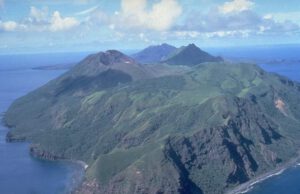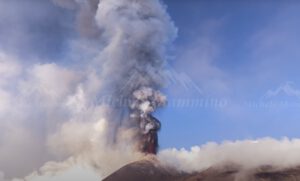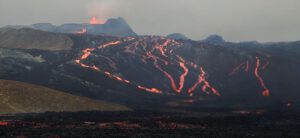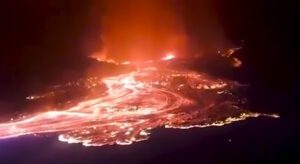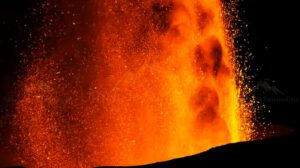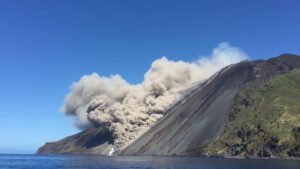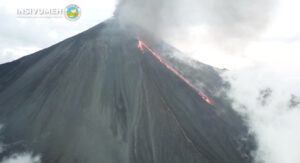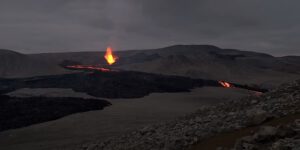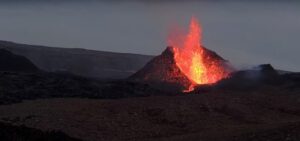Date: 18.04.2021 | Location: -8.272, 123.505| Eruption: Strombolian
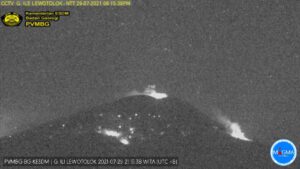 On the Indonesian island of Lembata, vegetation is burning on the slope of the Lewotolok volcano. This volcano has been active for months and erupts Strombolian. Yesterday, there was a somewhat larger eruption that threw glowing tephra out onto the slopes. There, the lava reached vegetation and sparked the fire. “Abdul Muhari, spokesman for the National Disaster Management Agency said in a newspaper interview, “The hot spots are in areas that are difficult to access and dangerous, and firefighting equipment is inadequate.” Thus, it seems that people will have to wait for nature to extinguish the fire. Compared to previous weeks, the volcano -except for the strong eruption yesterday- has been comparatively quiet in recent days: VSI recorded a total of 3 eruptions, 25 degassings, 1 tremor, and 8 volcanotectonic earthquakes. In the previous week, the values were twice as high.
On the Indonesian island of Lembata, vegetation is burning on the slope of the Lewotolok volcano. This volcano has been active for months and erupts Strombolian. Yesterday, there was a somewhat larger eruption that threw glowing tephra out onto the slopes. There, the lava reached vegetation and sparked the fire. “Abdul Muhari, spokesman for the National Disaster Management Agency said in a newspaper interview, “The hot spots are in areas that are difficult to access and dangerous, and firefighting equipment is inadequate.” Thus, it seems that people will have to wait for nature to extinguish the fire. Compared to previous weeks, the volcano -except for the strong eruption yesterday- has been comparatively quiet in recent days: VSI recorded a total of 3 eruptions, 25 degassings, 1 tremor, and 8 volcanotectonic earthquakes. In the previous week, the values were twice as high.
